The combination of tiles and laminate in the hallway
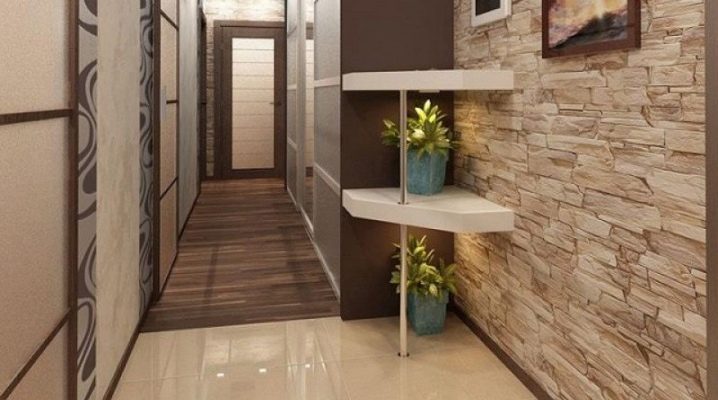
Contemporary flooring is like art. It is important to choose the right material for practical reasons. At the same time, the aesthetic perception is no less important: the floor covering should be visually attractive, fitting in appropriately with the style of the interior.
Extraordinary design techniques are in fashion, for example, a combination of tiles and laminate. This solution is especially important for the hallway - the place where the floor is most susceptible to moisture and dirt.
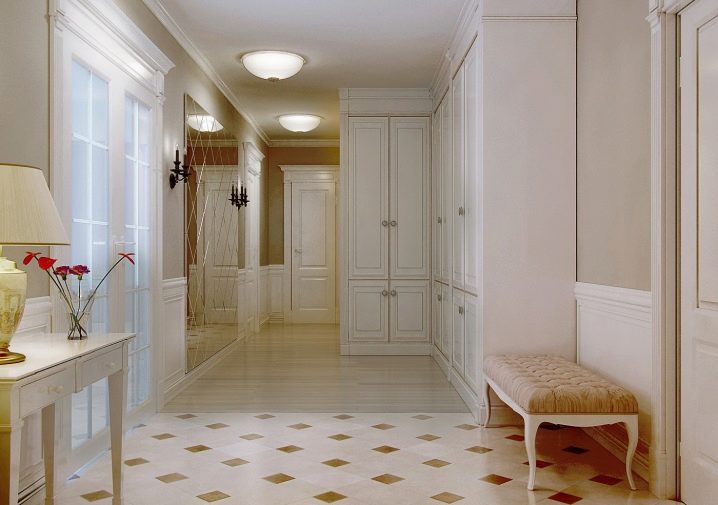
Pros and cons of combining
Today, the approach to flooring is more demanding than before. The floor covering should be attractive, reliable, easy to clean and beautifully preserving. Tile and laminate flooring work well together, and it is difficult to find the best type of material for the hallway: this area of the house requires particularly durable flooring.
After all, parquet or parquet board are rather weak types of finishes: they cannot be wiped with a damp cloth, they are afraid of the effects of detergents, they quickly lose their attractiveness with daily floor cleaning.


The combination of tiles and laminate flooring can be called the golden mean in the design of the floor.
This cladding has several functions:
- it allows you to zone the hallway space, contributing to the organization of each site;
- through it, you can beat the lack of usable area, visually increasing the space;
- the cladding method allows for areas with greater traffic to choose a more durable material that is resistant to abrasion and weight load;
- she is able to make the flooring fashionable, pleasant and homely cozy, imitating a different type of surface (including creating the appearance of carpet canvases that make the atmosphere of the room cozy);
- bring your own flavor into the interior by bringing together the disparate items of the existing furnishings.
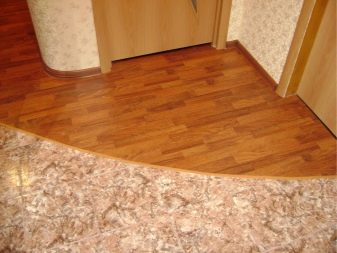
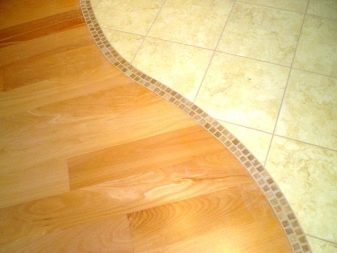
At first glance, it seems that the two materials are quite different and differ markedly in performance characteristics.
However, practice proves: the combination of tiles and laminate is a combination of reliability, quality and durability.

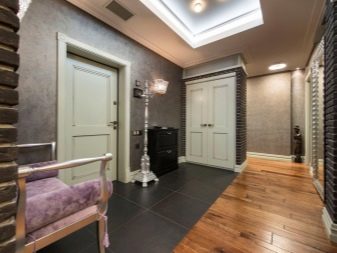
Both materials used are quality floor finishes. Combining them is a bold and fashionable design trick.
This cladding has a lot of advantages, since it:
- appropriate in premises of various types (residential apartments, country houses, summer cottages, offices, studios, industrial premises);
- harmoniously fits into a different style of interior, regardless of direction, be it classic, modern or ethnic;
- can link together different types of finishes for all rooms of the dwelling (for example, when floor tiles are used in the kitchen, and laminate in the bedroom);
- often allows you to save the family budget: if the area of the hallway is small, you can use the remnants of the material after lining other rooms for work;
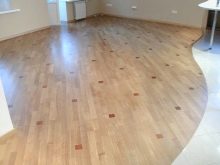
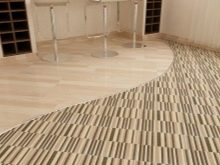
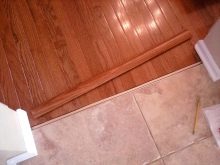
- is an excellent solution for the design of flooring in any interior, allowing you to extend the life of the floor and simplify its repair, if the occasion requires;
- allows you to correctly calculate the level of load on the floor surface, using material resistant to moisture, water and abrasive substances in places of greatest load;
- brings style to boring interiors, made in a single color scheme, paying attention to the sophistication of the design solution;
- is a hygienic lining that is harmless to users;
- allows you to purchase the correct amount without overspending and adding material for scrap, allowing, if necessary, changing the design of the floor covering.
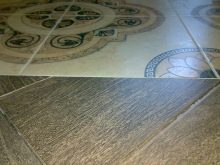
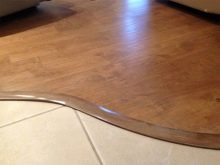
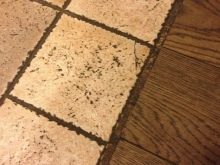
Both materials are convenient in that they make it possible to clad the structural features of the room (protrusions) without problems. If you wish, you can always buy raw materials, taking into account the available budget and your own preferences, because often you do not need a lot of material. By the way, this factor makes transportation easier.
In addition, it is worth noting the quality of the finished cladding: the laying of tiles and laminate provides a flat surface, so the appearance of the floor is always flawless.

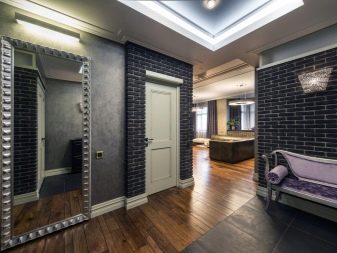
This combination also has a number of disadvantages.
The choice of materials should be deliberate. Not every mix is worthy of attention and admiration. Sometimes the problem lies in the selection of raw materials itself. For example, laminate flooring is more limited in color, tiles are matched to it taking into account the texture and the correct thickness. If the choice is approached on the basis of external characteristics, the floor covering may differ in the level of location, which can deprive it of its attractiveness.
The thoughtfulness of the design matters. The process of decorating the floor is quite laborious: it is important to calculate each tile fragment, its location relative to the intended pattern.
If you do the design "at random", the room risks becoming not just asymmetrical: it can "go away" to the side, having a bias. Long preparation is, albeit small, but a disadvantage. Not everyone will like the execution of a drawing with the application of each fragment of the pattern, its adjustment taking into account the seams.
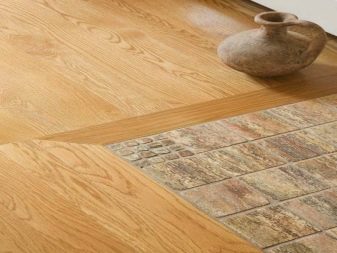
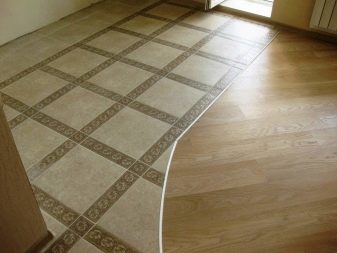
Joints are a sore subject of renovation. They are the weak points of the flooring. In addition to gluing the basic materials and preliminary surface preparation, you will have to take care of high-quality raw materials for joining. Frequent cleaning can gradually wash away the grout, and connecting structures often break off with constant mechanical stress.

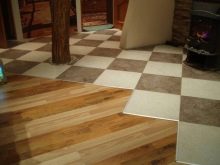
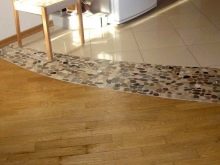
What materials to choose?
It should be borne in mind that not every type of material is suitable for the job. This is especially true for the laminate, which is classified according to the degree of relevance in a particular type of room. For example, for living rooms, manufacturers offer 21, 22, 23 classes of material, for commercial premises 31, 32, 33 classes are provided. The first varieties are simpler, not so durable, their structure is less dense, so this finish will last no more than 5 years. The second varieties are more expensive, although their performance characteristics are higher: such material is designed for 15 years of intensive service.
It is worth choosing a moisture-resistant laminate made using a special production technology. It is resistant to moisture and contact with water.
Such material can be used in rooms with high humidity. It is important that its class is at least 31: so it will correspond to the level of strength of the tile and will not be erased before it.
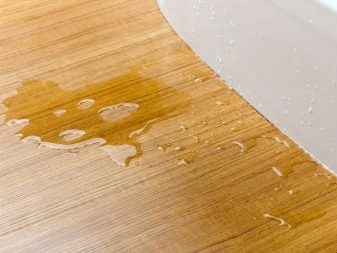
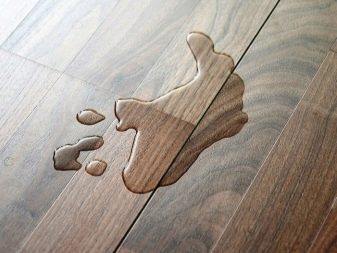
The choice of tiles is equally important. It should be floor-standing: such a material is much stronger than tiles, the manufacturing technology of the ceramic version differs from the usual counterpart for the kitchen. Porcelain stoneware is created by molding and pressing under high pressure. You can choose both varieties: they are hygienic, wear-resistant, strong and durable. Craftsmen believe that porcelain stoneware is even better than tiles.
The only drawback of both materials is cold, although today technologies allow you to combine some materials with a warm floor system.
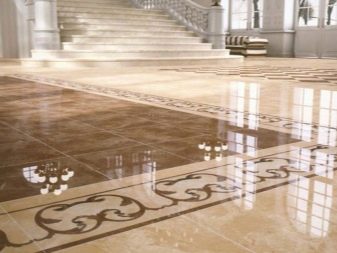
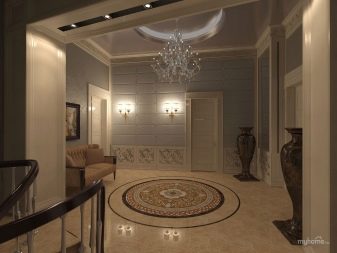
Combination options
The entrance hall is somewhat limited in terms of combination, which is explained by the clear distribution of the degree of shock load on the floor covering.The patchwork technique is excluded: this way the space will break into pieces, bringing a sense of disorder into the corridor.
The transition can be made from room to corridor by connecting the joint of materials with a molding that overlaps the joint, reliably holding the two materials and giving the flooring a monolithic look.
In order not to doubt how to properly lay (along or across), it is worth considering the features of the hallway.
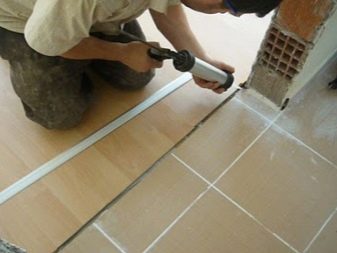
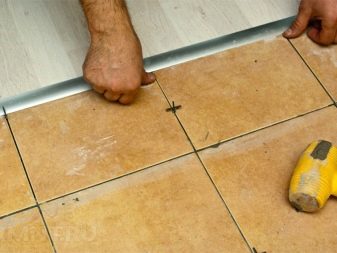
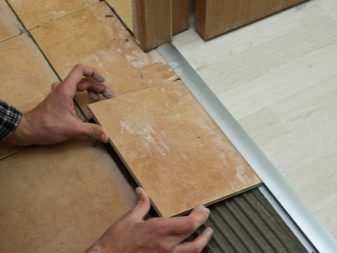

The design of combining textures depends on the skill of the master: if there is no experience, it is better to combine materials through clear straight lines. Laying can be like a tile or laminate backsplash, framed in contrast. If skill allows, the laying lines can be with a bend or turn, moving into another room or a narrow corridor. Of course, this finish is more difficult to do than to lay linoleum, but it eliminates the need for additional rugs that mask the surface of the floor covering or protect it from abrasion.
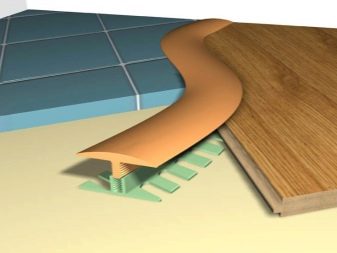

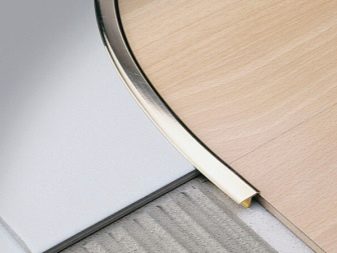
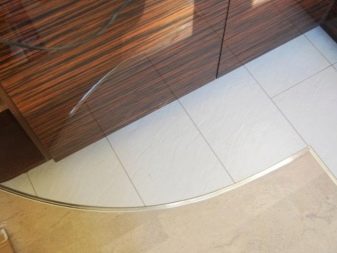
Color combinations
It is important to keep in mind: you should not choose the exact shade of the tiles and laminate flooring. Firstly, it will not be possible to do this, since the slightest discrepancies will in any case be two or three tones. Secondly, this technique makes the flooring boring, devoid of attractiveness. Thirdly, the texture, which is different in any case, will be lost against the background of the general color spot.
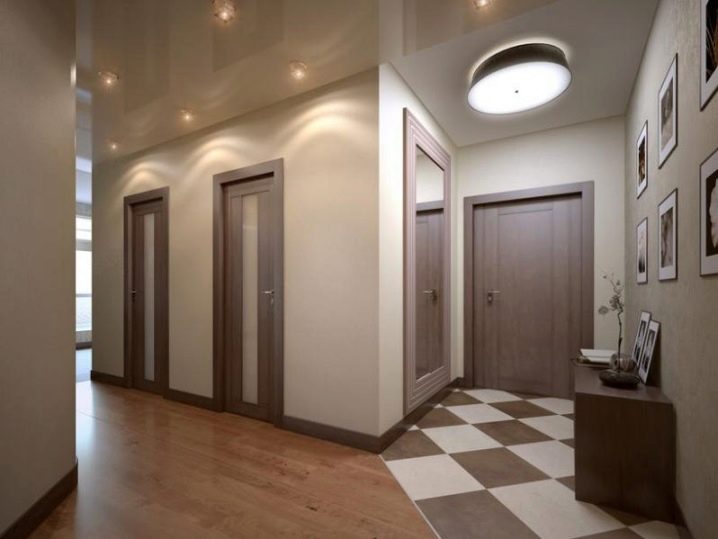
In order not to puzzle over how best to choose a shade and make a stylish design technique for floor cladding, it is worth considering three main ways of combining tiles and linoleum:
Neutral reception
A mix of shades of the same color scheme is an inconspicuous flooring option with an emphasis solely on functionality, excluding accentuation of the space.
These can be approximately the same light or dark tones that do not contrast with each other:
- universal (light wood + gray, beige + coffee with milk, sand + caramel);
- bleached with gray and with beige (white + arctic, light gray, gray marble + bleached, pale sand + diluted khaki);
- honey and chocolate tones (golden + beige, chocolate + dark beige, brown-gray + gray).
The success of the choice is the simultaneous purchase of two materials: this way you can better see how they fit together.
If the question of choice is open, and the laying of tiles no longer tolerates, it is better to buy a finish in the color of coffee with milk in one tone or with a texture like a stone. Any type of laminate is suitable for this tile.
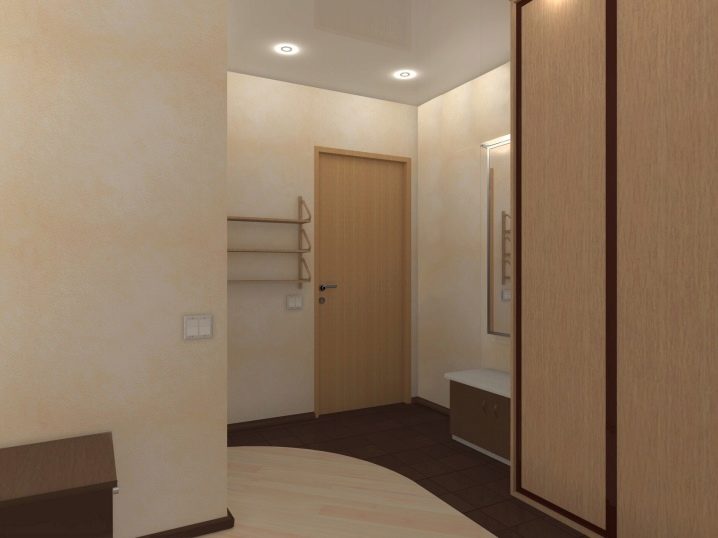
Contrast play
The technique in which one shade is much lighter than the other is the most popular. It's easier to pick two tones this way, especially if they are both neutral. This will allow you to furnish the hallway with any furniture and accessories in the future. In this case, it makes no sense to go to extremes, stopping the choice on the "black and white" solution, which has a rotten effect.
Better to choose such contrasts:
- textured with light (brown + pale gray, cream, vanilla, beige) or rich with khaki or marble gray;
- dark wenge with vanilla, zebrano with beige, bright brown with sand or golden;
- mocha + honey, light gray woody + swamp granite, white laminate and sandstone.
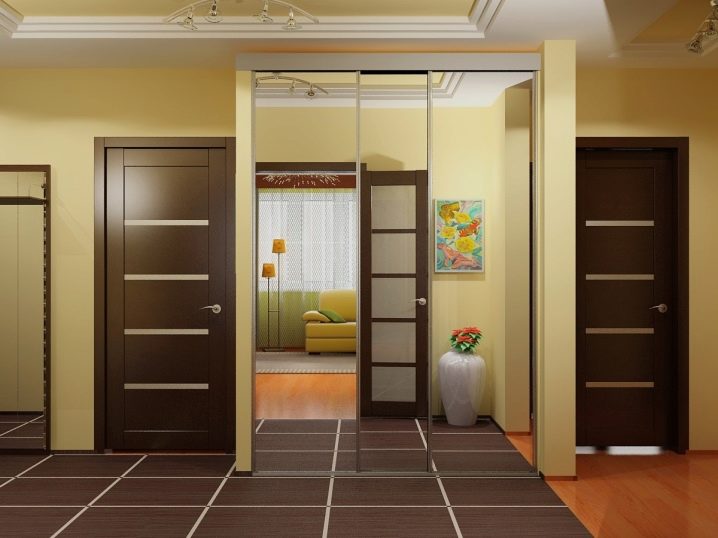
Imitation and drawing
In this case, the combination means a bright tile pattern and a muted tone of the laminate. The technique is divided into two groups: the use of a pattern and wood, marble texture, as well as a combination of texture and plain tiles.
The most interesting color schemes are combinations:
- terracotta and sand, dark beige and red-brick (an excellent solution for dark rooms);
- bleached beige with coral, powdery, peach;
- cold beige with diluted turquoise, lilac.
For harmony, you can use a pattern in which one of the shades matches the color of the laminate. However, it is important to consider: there should not be a lot of support for one tone: this way the shade can merge into a single spot.
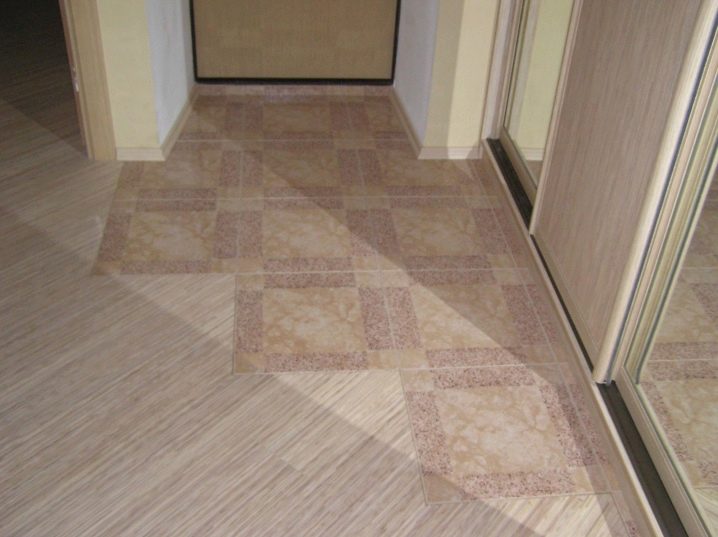
Styles
There is no limit when a creative designer is involved. He knows how to combine incongruous so that the combination of materials looks appropriate, demonstrating a commitment to any style.
If you take the ideas of professionals as a basis, you can make this cladding in the style:
- classic;
- modern;
- minimalism;
- high tech;
- avant-garde;
- English;
- empire style;
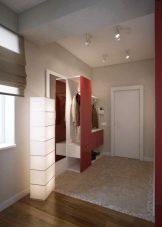
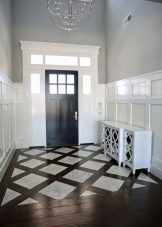

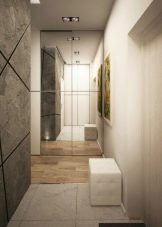
- Arab;
- art deco;
- loft;
- African;
- Biedermeier
- bionics.
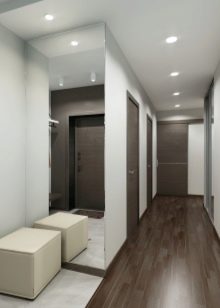
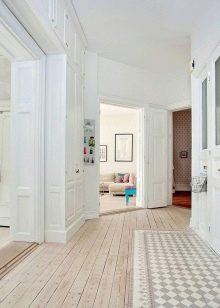

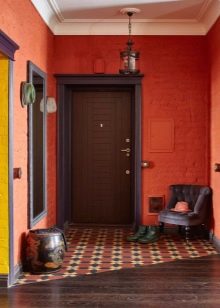
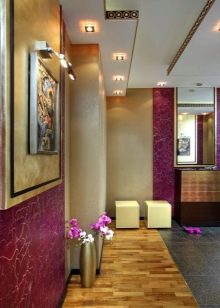
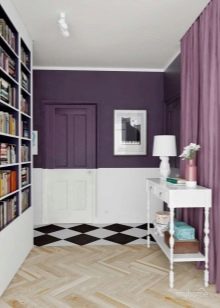
The main thing for a successful solution is to take into account the furnishings: sometimes they are the ones who complete the interior composition in the right way.
When choosing a style, color and texture are important: in some cases, the interior needs dullness and nobility, some modern trends breathe simplicity, ethnic styles need a vintage shade.
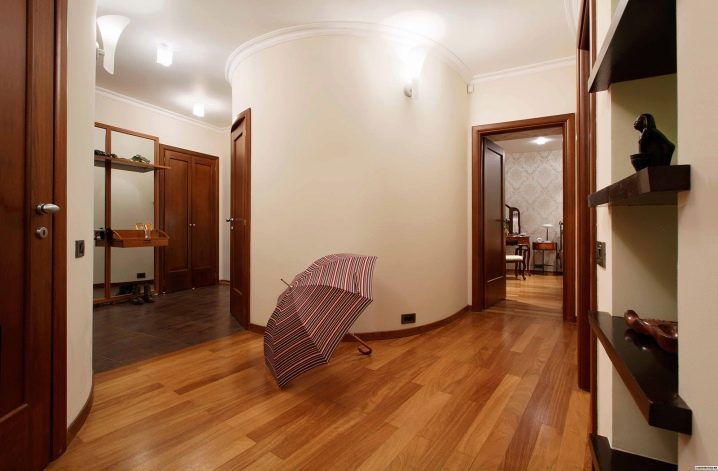
Professional advice
Since laminate flooring tends to swell upon prolonged contact with the back side with water, it is important to provide protection against moisture penetration into the installation seams. To protect the design coating from water, you need to treat the seams with a layer of mastic with protective wax.
In addition, it is worth taking note of a few recommendations:
- when buying a laminate, choose a material with locks: it is more practical than the glue option, if necessary, it is easy to disassemble and remake;
- pay attention to the thickness of the laminate: 12 mm is preferable (it is more expensive, but the locking system will be more reliable);

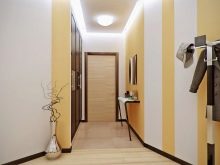

- do not take a smooth glossy material: it is slippery, easily soiled and shows any dirt (more practical is matte surfaces);
- to combine two materials without a difference in floor level, you can use special sills made of metal, plastic or a cork backing;
- bending contrasts is appropriate if such lines are present in the design of walls or ceilings.
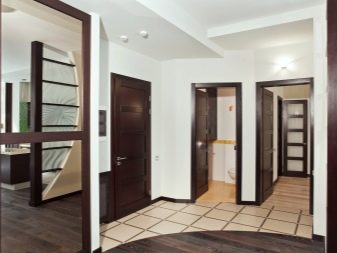
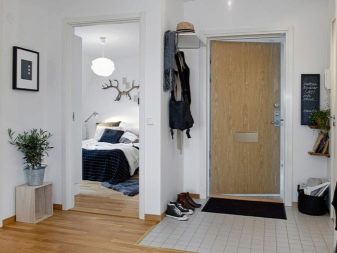
Experts recommend paying special attention to the quality of finishes. The purchase should be carried out in a trusted store with a good reputation: this way the risk of purchasing low-quality raw materials is excluded.
When choosing tiles, pay attention that all fragments are from the same batch: this will relieve the flooring of different shades and make the finish monolithic. In addition, calibration and checking for chips is important: defects in the material can cause a difference in the level of the two surfaces.

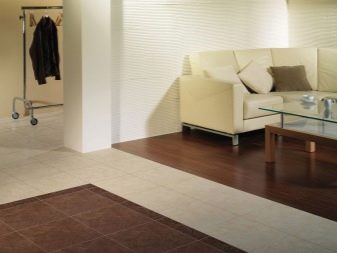
Hallway floor design
To understand what the combination of tiles and laminate is in the interior of the hallway, you can look at the zoning of experienced designers:
- the combination of solar tiles and brown laminate with a board texture looks original, decorated with a rounded line and complemented by a rug at the threshold in the same shade as the laminate;
- the interior in brown and beige tones will sparkle in a new way if you make a rug at the threshold of soft beige tiles of a small size, decorated with floral patterns;
- you can accentuate the ethnic interior with the help of bright color contrasts: you can zone the space with a clear straight line, decorate the threshold with ornamented tiles, connecting it with a dark-colored laminate;
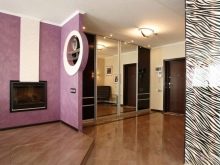


- if there is no experience, and the experiment simply delays, you can put the tiles at the threshold with a ladder: it is easier to carry out the work by connecting two neutral shades through moldings or sills;
- the transition of materials can extend to other rooms: the paths from tiles on a beige laminate background look original;
- interesting is the combined technique of smoothing the interior setting: the contrast of white and beige finishes dilutes the dark spots of the room, making it softer by means of a curved line.
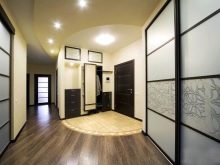
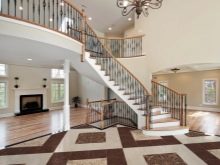
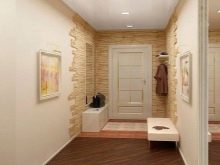
Reviews
The combination of tiles and laminate in the hallway is a stylish technique for finishing the floor. This is evidenced by the reviews left on the Internet. Those who made such a floor covering note: this flooring decor looks elegant and cozy, it is unusual and attracts attention.In addition, it is noted in the comments that such a finish is practical: if necessary, the floor can always be wiped with a damp cloth, removing any dirt.
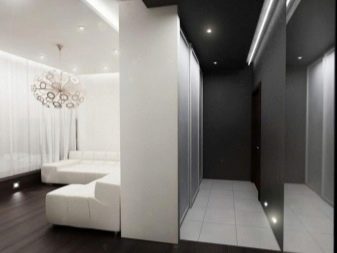
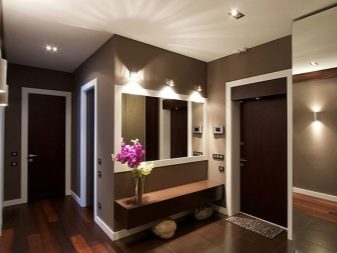
For more information on how to correctly make a joint between a tile and a laminate, see the video.













The comment was sent successfully.